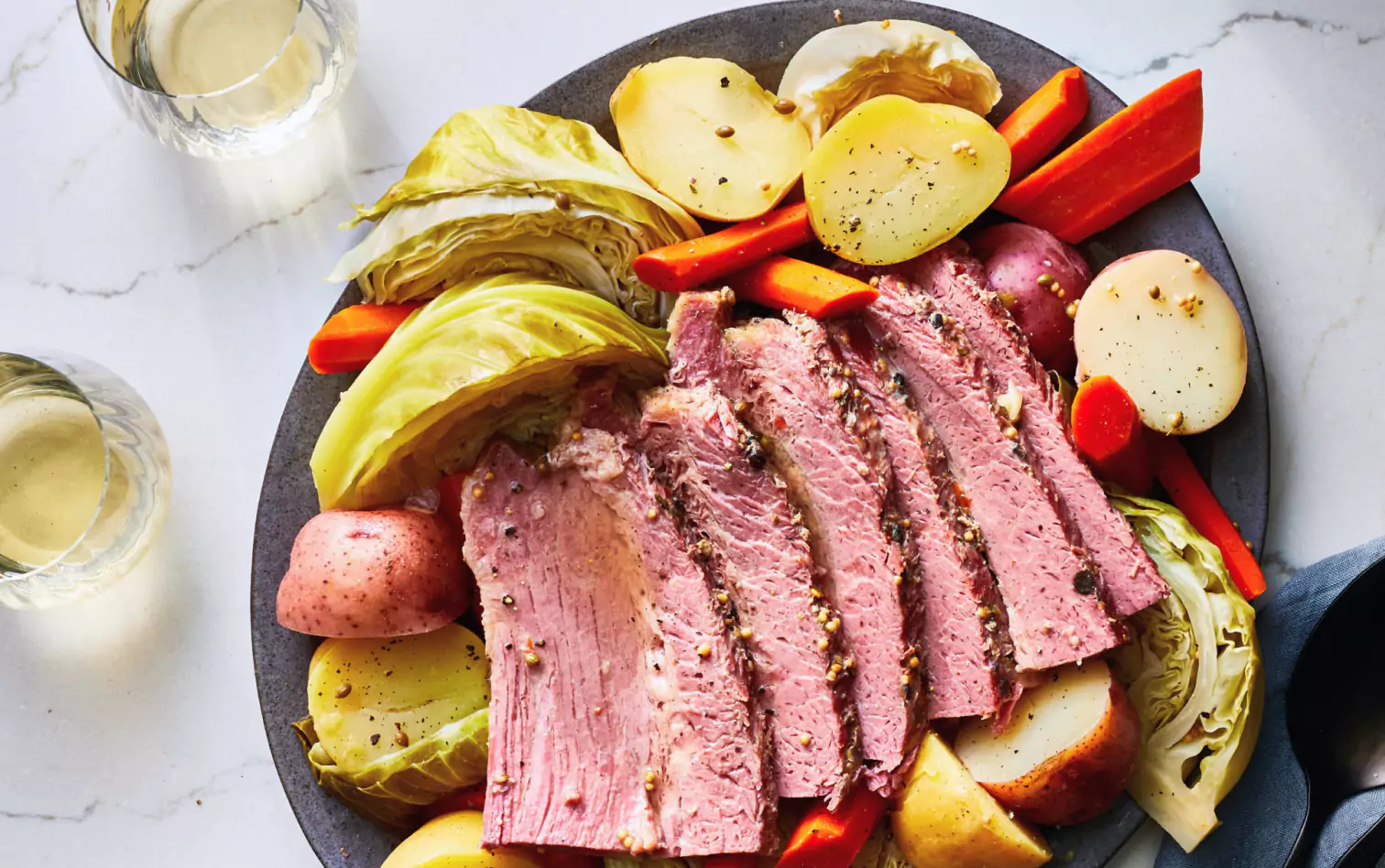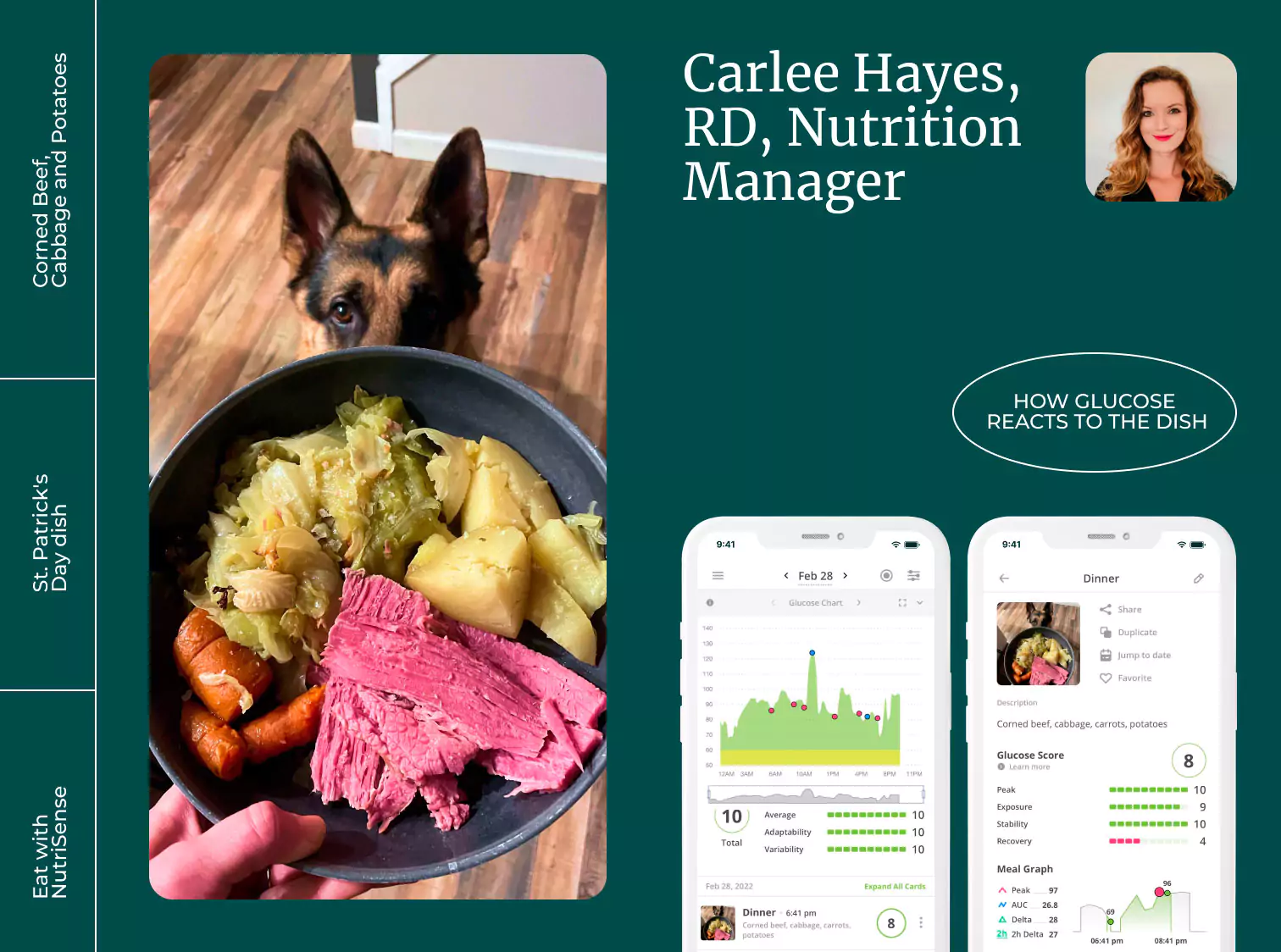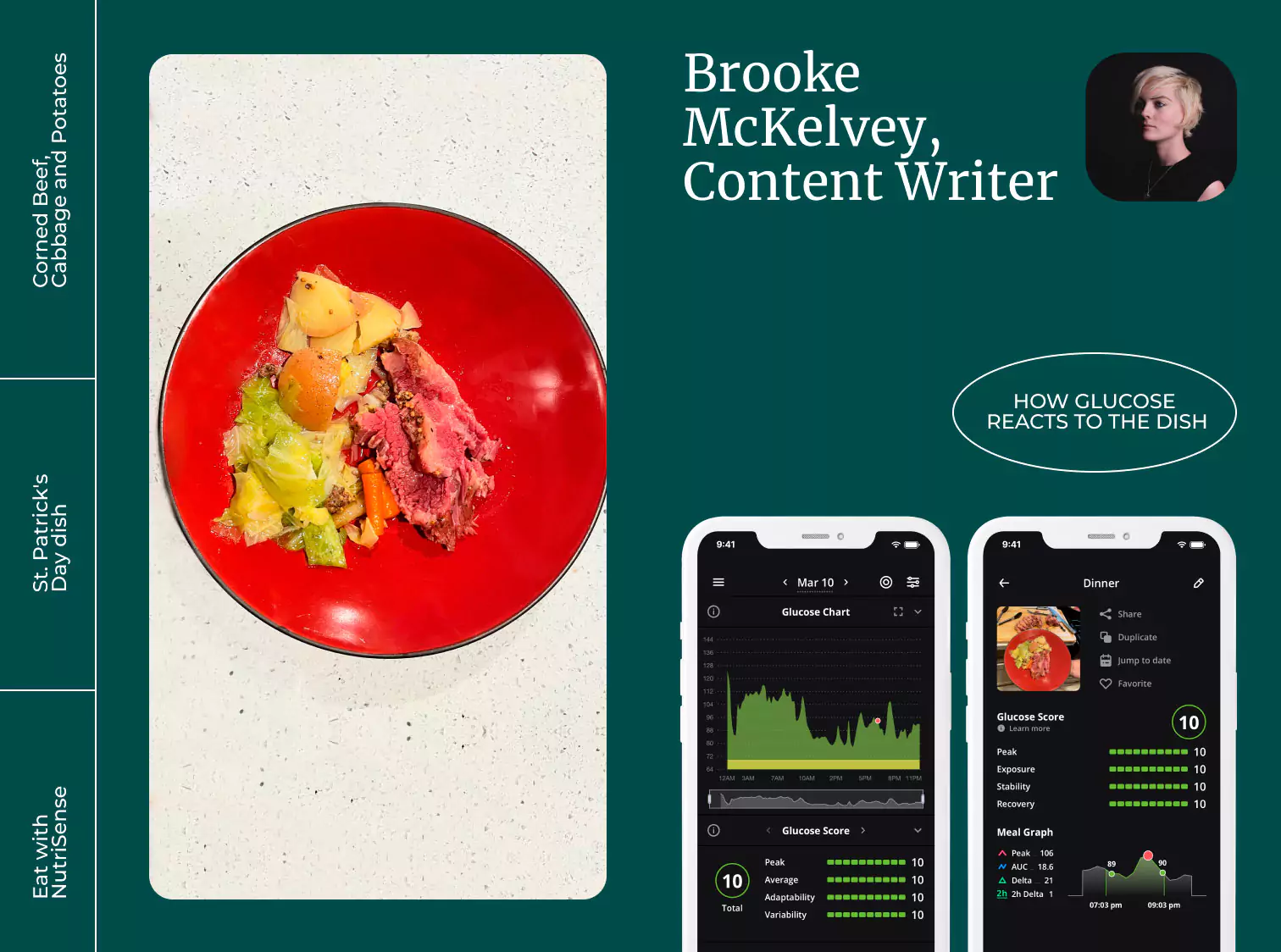Eat with Nutrisense This St. Patrick's Day

Key Takeways
Get ready to put on your favorite green outfit and indulge in some Irish beer—it's time to celebrate Saint Patrick's Day! The Irish holiday is celebrated annually on March 17 and is synonymous with green-dyed food, drink, sometimes even rivers. But of course, there's more to the celebration than beer and green-dye.
The day began as a feast for the patron saint of Ireland, Saint Patrick, who is often given credit for bringing Christianity to Ireland. Many legends and stories surround the story of Saint Patrick. Still, the most famous is that he used a three-leafed shamrock to explain the Holy Trinity to Irish pagans.

Now a celebration of Irish culture and heritage, Saint Patrick's Day is celebrated in many ways, including wearing green, eating traditional Irish food, drinking Guinness, decorating houses and storefronts with everything from four-leaf clovers to images of Leprechauns, and attending church services.
We thought we'd try a little experiment with our continuous glucose monitors to celebrate this fun holiday. And since Corned Beef, Cabbage and Potatoes are such a quintessential St. Patrick's Day dish, what better meal to pick for our experiment than that?
Three members of the Nutrisense Team decided to make the traditional meal to see how it affected their blood glucose levels and if they had similar reactions to it. Would eating the same meal, at the same time, record the same blood glucose readings?
Read on to see what our Registered Dietitian and Nutrition Manager, Carlee Hayes, our Content Writer, Brooke McKelvey, and our Social Media Manager, Luz Cortazar, found out.
The Meal

The delicious dish we decided to try out includes a beef brisket cured in brine, typically with garlic, peppercorns, and bay leaves. The beef is then boiled with cabbage and potatoes. It's hearty, flavorful, and a popular dish on tables across the world on St. Patrick's Day. Try it out for yourself this week!
The recipe Brooke, Carlee, and Luz made calls for:
- 3 pounds of corned beef brisket with a spice packet
- 10 small, red potatoes
- 5 carrots, peeled and cut into 3-inch pieces
- 1 large head of cabbage, cut into small wedges
The Results

Carlee ate her corned beef with potatoes, carrots, and cabbage at around 7 p.m. As you can see in her metrics, she had a moderate peak, staying below 140 the entire time after eating.
What this means is that her body did a great job of keeping glucose in that good, homeostatic range. She also had a slight shift in glucose, as evidenced by a great stability score in her metrics. It can lead to stable energy levels after the meal and is a good sign that her portion sizes worked well for her.
Carlee's score suffered in recovery, as it took her longer than the ideal two to three hours after eating to return to pre-meal values. It may be because she consumed the meal later in the evening when insulin sensitivity is low, as we typically see delayed responses in the evening hours.
She also was sedentary after dinner, skipping her usual after-meal walk and relaxing instead.
Her response was good, and we can say this meal worked well for her overall. But she could improve this response by adding a walk to help her body utilize incoming glucose more efficiently.

Luz also ate her meal at approximately 7 p.m., so the timing of these meals was exactly the same. So, we expected insulin sensitivity to be reduced in the same capacity. Luz is extremely active and uses her bicycle to get her to where she needs to go in town.
She goes to the gym four times a week for HIIT and cycling classes, and has noticed considerable improvements in her glucose since she began wearing Nutrisense CGMs.
All of Luz's metrics were optimal, as evidenced by scores of eight or above. Her peak was well within the 140 threshold. She also returned to baseline much more rapidly than Carlee, likely related to her activity level and movement after the meal.
This is an optimal response, so we can safely say that corned beef and cabbage worked well in her diet.

Brooke ate her corned beef at 7 p.m and had a perfect 10 out of 10 glucose score. Her activity level may have helped improve her overall response. She spent about four hours doing light cardio early in the day and went for a short walk about 30 minutes after her meal.
Interestingly, she had two glasses of wine with the meal but did not see any drastic fluctuations in her blood glucose levels. It may be due to the corned beef and cabbage's healthy fat and protein content.
Additionally, lower carbohydrate beverages (like wine) often cause minimal responses in glucose, as the body will prioritize breaking down the wine first.
For some people, this can result in a higher glucose value the next day (even from just one drink). Brooke's response showed that she tolerates this meal really well.
Key Takeaways From This Experiment
What can we learn from this experiment? Well, for starters, even with such similar readings, everyone's response looks a little different. All three testers had good, normal glycemic responses to this meal.
It's likely because they practiced great glucose habits, like eating protein first, staying active throughout the day, and limiting carbohydrate portion size. Plus, eating this food last can help too.
As always, some things could have improved their responses. For example, Carlee could have been more active after the meal to help her body utilize incoming glucose a little bit better. So, movement after meals is key. In general, they ate these meals a little later in the evening, and it's typical to see more significant responses to meals consumed at these times.
Traditional pairings with this meal (like the classic Guinness Stout) may impair these responses, as dark beers tend to be higher and carbohydrates and may lead to larger glycemic responses.
To optimize your personal response, test it out for yourself. We've observed that this meal can work well for our crew, but it's important to remember that every body is different. If you love corned beef and cabbage, chances are, you can make it work for you by applying our glucose hacks below.
Keep Your Blood Sugar in Check

What you eat during the holidays can significantly impact your blood glucose levels—especially during indulgent holidays like St Patrick’s Day. Here are some tips to help you keep your blood sugar in check while still enjoying all your favorite foods:
- Try to maintain your regular exercise routine before celebrating. Consider a short walk after all the indulgent eating and drinking. Movement helps to prevent and regulate blood glucose spikes.
- Start your meal with protein and fiber, like a big green salad. Save carbohydrates for last.
- Hydrate, hydrate, hydrate. Staying hydrated is not only crucial for body function and cell health, but it can also help you stave off sugar and carbohydrate cravings. And, it can help you stay feeling fuller, for longer.
- Rest up before celebrating. When you are tired, you may begin to crave more sugar and carbohydrate-heavy foods as your body searches for a quick energy boost. On top of that, just one night of poor sleep could reduce insulin sensitivity, causing higher glucose responses to foods.
- Time your meals for earlier in the day if possible. The hormones that help us digest foods work more efficiently earlier in the day, so plan for an earlier celebration if you can.
Find the right Nutrisense programto turn insight into progress.
Go Beyond Glucose Data with Nutrisense
Your glucose can significantly impact how your body feels and functions. That’s why stable levels are an important factor in supporting overall wellbeing. But viewing glucose isn't enough. Nutrisense, you’ll be able to learn how to use your body's data to make informed lifestyle choices that support healthy living.
One-to-one coaching
Sign up to access insurance-covered video calls to work with a glucose expert: a personal registered dietitian or certified nutritionist who will help tailor your lifestyle and diet to your goals.
Monitor and measure what matters
With the Nutrisense CGM Program, you can monitor your glucose with health tech like glucose biosensors and continuous glucose monitor (CGM)s, and analyze the trends over time with the Nutrisense App. This will help you make the most informed choices about the foods you consume and their impact on your health.
Find your best fit
Ready to take the first step? Start with our quiz to find the right Nutrisense program to help you take control.

Carlee's training at Western Illinois University and an internship at the Memphis VA Hospital lead her to a career in outpatient counseling and bariatric nutrition therapy. In these positions, Carlee realized many of the disease states (upwards of 80%!) her patients experienced were actually preventable. She knew she had to dig deeper into preventative health and has since been passionate about helping people translate this complex glucose data into actionable changes anyone can implement into their everyday lives.


.webp)
